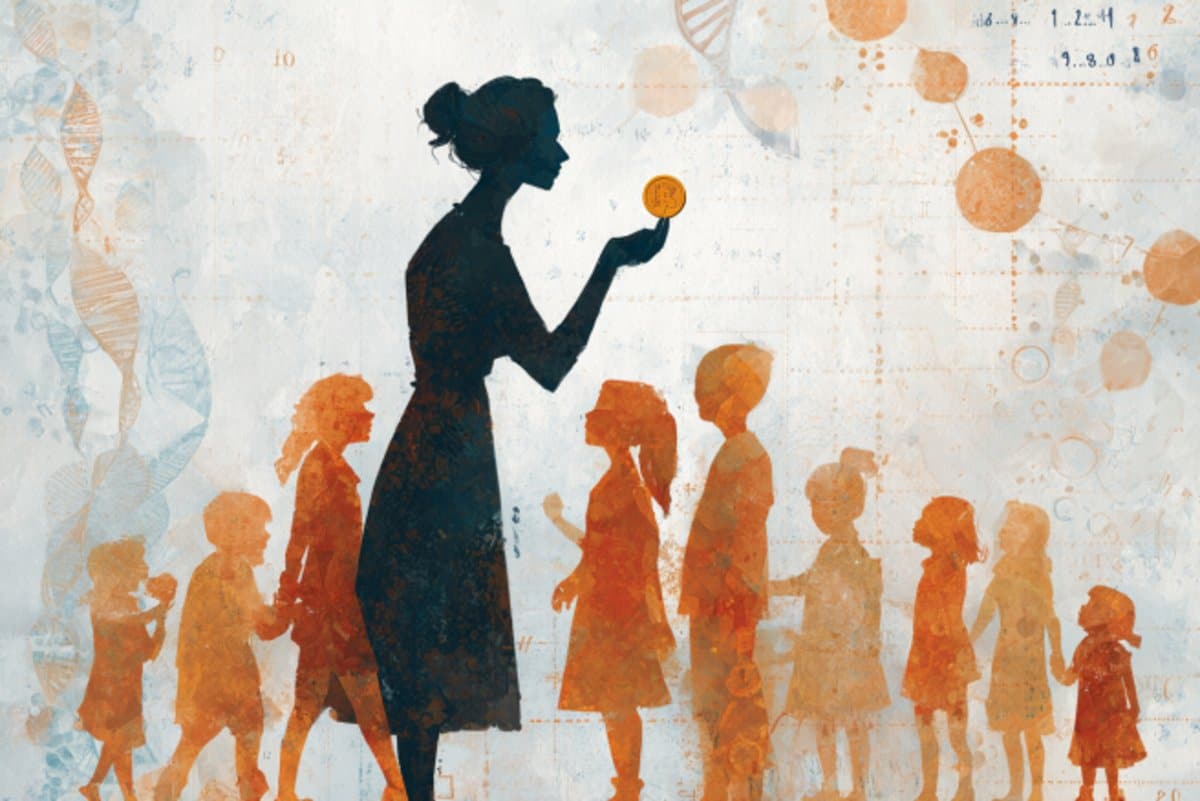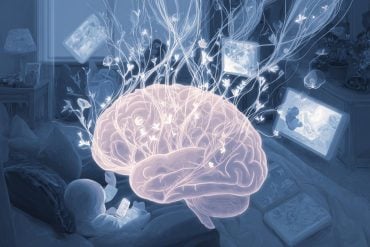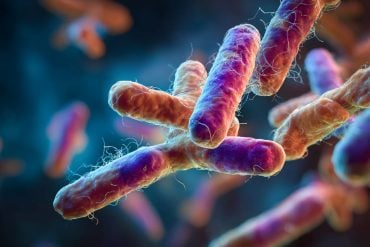Summary: A massive study of over 58,000 women shows that families may have their own subtle biological bias toward having boys or girls, rather than offspring sex being purely random. Researchers found that older maternal age at first birth and specific maternal genetic variants were linked to having only sons or only daughters.
The sex distribution in families fit a weighted beta-binomial model rather than a simple 50/50 binomial model, suggesting unique maternal factors at play. These findings challenge the idea of completely random sex determination at the family level and hint at intriguing genetic and physiological influences.
Key Highlights:
- Large-scale study shows that offspring sex does not follow a perfect 50/50 distribution within families.
- Older maternal age and specific maternal genetic variants are linked to having children of only one sex.
- Parents with three boys or three girls already have over a 60% chance of the next child being the same sex.
Source: Neuroscience News
For generations, families with all boys or all girls have been something of a curiosity. Parents, friends, and scientists alike have wondered: Is it just chance, or are some families predisposed to producing children of only one sex?
A groundbreaking new study, analyzing data from over 58,000 U.S. women and nearly 150,000 births over six decades, has found that offspring sex is not quite the textbook coin toss we thought it was. Instead, each mother appears to carry her own subtle bias—genetic, physiological, or both—that influences the likelihood of having a boy or a girl.
A Coin Toss… but Weighted
In biology classes, we’re taught that sex at conception is a simple matter of chance: sperm carry either an X or a Y chromosome, so each fertilization event is independent and has roughly a 50/50 chance of producing a girl or boy.
But real families often don’t seem to fit that pattern. From the family of five brothers down the street to the couple with four daughters in a row, it’s hard to ignore how common unisexual sibships appear.
The researchers, using data from the Nurses’ Health Study II and III, found that the distribution of offspring sex fits a beta-binomial model better than a simple binomial model.
What does that mean? In essence, it suggests each family has its own “weighted coin,” slightly skewed toward boys or girls, rather than the same fair coin toss everyone else uses.
This finding held even after accounting for family planning behaviors, like stopping after achieving a desired boy-girl balance.
Maternal Age and Genetic Clues
The study also revealed intriguing maternal factors linked to having all boys or all girls. Women who gave birth at older ages were more likely to have offspring of only one sex.
Although the exact biological mechanisms aren’t yet clear, maternal age is known to affect the reproductive environment in ways that might favor either X- or Y-bearing sperm.
The researchers then conducted a genome-wide association study (GWAS) to search for genetic factors. They discovered maternal genetic variants near NSUN6 (associated with having all girls) and TSHZ1 (associated with having all boys), providing some of the first evidence that maternal genetics play a role in sex distribution within families.
Interestingly, other heritable traits such as height, blood type, and hair color showed no significant association with unisexual sibships, emphasizing the specific and subtle nature of the maternal influences identified.
Why Does It Matter?
Understanding why some families produce only boys or only girls is more than a matter of curiosity—it has implications for reproductive health, evolutionary biology, and even public health policy.
The study’s findings challenge the long-held assumption that population-wide sex ratio randomness applies at the family level. Instead, there appears to be meaningful biological variation, raising questions about how environmental, physiological, and genetic factors interact to influence sex ratios.
From an evolutionary standpoint, some theories have proposed that parents might bias the sex of their offspring to maximize reproductive fitness, based on their own health or status.
While those ideas remain speculative, this study adds weight to the idea that humans, like some other species, may indeed have subtle biological mechanisms influencing offspring sex.
The Odds of the Next Child
One particularly practical takeaway for parents: the study calculated the conditional probability of the next child being the same sex as previous siblings. For example, after three boys, the chance of having a fourth boy was about 61%, rather than the 50% many assume.
So for families with three boys or girls already, that next baby really is more likely to match its siblings than not.
Strengths and Caveats
This study stands out for its massive sample size, detailed maternal data, and the innovative use of both statistical modeling and genetic analysis.
However, it’s important to note the study’s limitations. The population was overwhelmingly white, and all participants were U.S. nurses—factors that could limit generalizability to other groups. The study also lacked data on paternal genetics, which likely play a role as well.
What’s Next?
The findings open the door to exciting future research: exploring how maternal physiology, environment, and genetics interact to produce these subtle biases.
Researchers are also eager to see if paternal factors contribute similarly, and to validate these genetic findings in more diverse populations.
Until then, families with three boys or three girls wondering whether to try again can take heart: it’s not quite a coin toss, but neither is it destiny.
Funding: This work was supported by the National Institutes of Health grant U01 HL145386 (J.E.C.), the National Institutes of Health grant R01 CA67262, and the National Institutes of Health grant U01 CA176726.
About this genetics and reproduction research news
Author: Neuroscience News Communications
Source: Neuroscience News
Contact: Neuroscience News Communications – Neuroscience News
Image: The image is credited to Neuroscience News
Original Research: Open access.
“Is sex at birth a biological coin toss? Insights from a longitudinal and GWAS analysis” by Siwen Wang et al. Science Advances
Abstract
Is sex at birth a biological coin toss? Insights from a longitudinal and GWAS analysis
Some families consistently have offspring of only one sex, raising questions about whether sex at birth is truly random.
This study investigated whether offspring sex follows a simple binomial distribution within families and identified maternal factors associated with unisexual sibships.
We analyzed 58,007 US women with two or more singleton live births (146,064 pregnancies, 1956–2015).
Offspring sex followed a beta-binomial rather than a simple binomial distribution, indicating that each family may have a unique probability of male or female births, akin to a weighted coin toss.
Deviations from simple binomial distribution were more pronounced when we excluded each woman’s last birth to reduce the influence of sex-based stopping behavior.
After excluding the last birth, older maternal age at first birth was associated with higher odds of having offspring of only one sex.
A genome-wide association study identified maternal SNPs linked to having female-only (NSUN6) and male-only (TSHZ1) offspring. Our findings suggest maternal factors influence offspring sex distributions.







